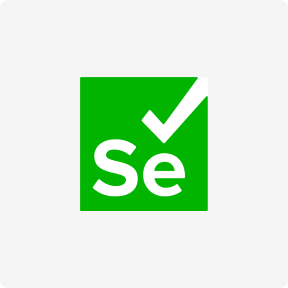Understanding enterprise systems adaptability: An exploratory survey
By 1990, technology analysts had a name for this new category of business management software—enterprise resource planning. Enterprise systems (ES) are referred to as large-scale application software packages which reinforce business processes, reporting, information inflows, as well as data analytics within the complex organizations. Whereas ES are generally packaged enterprise application software (PEAS) systems, they are considered as bespoke, custom advanced systems established to support particular organizational requirements. The enterprise systems falls under various categories including enterprise planning systems, customer relationship management software, and enterprise resources planning (ERP) systems. Even if business intelligence and data warehousing systems are enterprise-broad package application software commonly sold by ES retailers, they don’t directly support implementation of business processes, but they instead exclude from this terminology.
Veza launches Next-Gen IGA to help enterprises reduce identity risks – Help Net Security
Veza launches Next-Gen IGA to help enterprises reduce identity risks.
Posted: Wed, 11 Oct 2023 13:30:09 GMT [source]
In a smallest scenario, an enterprise project consists of the project header only and so can be used for internal order like use cases known from SAP S/4HANA On-Premise. Since the project header itself is a special form of a WBS element, it can already be used to plan and collect costs and revenues. Besides WBS elements, you can assign milestones to the project header to structure your project. Both, enterprise projects as well as professional services projects, provide an integration to core business processes in SAP S/4HANA Cloud, such as time recording, purchasing and financial accounting. This is due to the fact that it has aided various management tasks within the organization including planning, controlling, and directing immense daily activities. For instance, SE employs an integrated database hence being able to bring about resolutions concerning multi-module application model in the general information system.
Reduced Costs
At the end, it is consumers who make a determination as to whether a business will succeed or fail. The consumers have the right to choose whether they can spend their money on either product X or Y. If they prefer one over the other, then the owner has no right to stand in their way.
To add motivation and, so, system buy-in, consider implementing rewards for achieving training milestones. This can take the form of team-specific milestone parties or point-based prizes for trainees who have mastered key concepts. Once you’ve trained leadership team members from each function, they should then be responsible for training their own teams. By allowing team leads to train their own teams, function-specific trainees receive more pointed instructions on how the system can benefit them based on their roles.
How Ansible Automation task scheduling improves productivity
Most or all of an organization’s data should reside in the ERP system to provide a single source of truth across the business. It allows enterprises to gradually implement key modules one at a time, that gains the ability to change certain areas without disrupting overall operations. However, it is important the modules are compatible with each other and easily integrated with the existing solutions, if any. Enterprise software, also known as enterprise application software (EAS), is computer software used to satisfy the needs of an organization rather than individual users. Such organizations include businesses, schools, interest-based user groups, clubs, charities, and governments. The CRM module makes it possible for businesses to manage client operations, such as marketing, sales, and customer service.

Helps in managing supplier relationships more effectively, ensuring timely delivery and quality of products. Facilitates demand forecasting, helping to optimize inventory levels and reduce carrying costs. And if you do find yourself on the job hunt, the VentureBeat Job Board is the ideal place to start your search. Next, look at what a new job will grant you in terms of professional development.
things to look for in an ERP system
The amount of money that is left after the subtraction of the expenses from the business income is thus referred to as the profit. Organizations basically try hard to keep their costs down and increase the income from the business (Vernadat, 2007). There are many benefits to implementing an enterprise system integration architecture, but there are also challenges along the way. TECHNIA’s Integration Framework can help you overcome these challenges and achieve your business goals faster than ever before. As the manufacturing ERP connects your sales and manufacturing teams, you can better close sales with high customer satisfaction. Your sales team, for example, can know what items you have in stock to ensure what they’re selling is what they can deliver, then process payments directly from your ERP.
- Such software supports business processes, information flows, and provides reporting and data analytics to enhance business performance.
- In this article, we have meticulously crafted bespoke SELinux policies and seamlessly deployed them across an extensive fleet of servers.
- Manufacturing companies in highly regulated sectors—such as the pharmaceutical, food and medical devices sectors—should consider QT9’s combined ERP and QMS solution.
- In this work, we present an empirical study exploring current views on ES adaptability, which supports the hypothesis that ES adaptability is viewed as critical.
- You can define the required modules and integrate them into the current system, which will strengthen and improve the already working system and minimize disruptions caused by introducing new software into the processes.
Each enterprise has streamlined work processes that have been running for many years and they face a tough choice whether to upgrade the existing one, integrate a ready-made solution or develop a custom from scratch. Enables effective management of resources, including workforce, finance, and assets. BI provides predictive analytics in a format of various graphs, charts, and tables to optimize work performance and give executives actionable insights to help make better organization’s decisions. The system collects and analyzes data from various sources, like https://www.globalcloudteam.com/ marketing, sales, manufacturing, HR, etc., using data mining, benchmarking, and advanced statistical algorithms. The finance module also shares information with other modules, such as manufacturing, procurement, and others, allowing the generation of financial reports for different departments and business units. Both modules provide detailed reports, be it on sales pipelines, lead sources’ effectiveness, activity, forecast, case logs, and profitability or marketing campaigns performance to measure the effectiveness of efforts and shape plans and spend.
Customer Relationship Management (CRM)
Some features that are strong in a manufacturing ERP include warehouse management, manufacturing, inventory management, supply chain optimization and distributor modules. Many also offer specific modules to help manufacturing companies comply with regulations within their industries, such as modules for managing medical device or pharmaceutical manufacturing regulations. The ERP landscape has shifted with the rapid evolution of software as a service (SaaS) cloud applications. Because of the mobile platforms and decentralized workforce–work anywhere and anytime–ERP systems can no longer be tied to yesterday’s on-premises back-office applications. The next-generation, cloud-based, and modern ERP solutions support the new industry dynamics while providing the ability to reduce support time to enable organizations to respond quickly to volatile markets and industry trends. Today’s ERP systems provide an enormous range of business functionality, but they still need to connect to and synchronize with other applications and data sources – such as CRM and HCM software, e-commerce platforms, industry-specific solutions, and even other ERPs.

For example, its Warehouse Management module offers tools to streamline the management of your warehouse, from label printing and barcoding to bin replenishment and process automations. Its value-added services give manufacturers tools to manage customer relationships, from tracking product assemblies and production and tracking service orders and contracts to helping customers stay up to date on their stock levels of your products. Today – in the era of digital transformation – modern ERP systems are increasingly taking advantage of new intelligent technologies such as AI, machine learning, robotic process automation (RPA), the IoT, natural language processing (NLP), and in-memory databases. They provide businesses with the ability to run even more efficient processes, leverage up-to-the-minute insights from both transactional and unstructured data, and ultimately remain competitive in a time of unprecedented change.
Operation support
As anticipated, we can now access the files and directories and make changes as needed. Recompile the updated private_file.pp file once more to pull the newly made changes in the system. Determine the root cause of the issue using the ausearch command, which conducts audits to identify problems and provide resolutions.

In addition to being able to connect all your internal teams, you can also connect all locations that participate in your supply chain. In doing so, you can streamline your supply chain process and ensure that all materials arrive when and where they are needed just in time to be put to use without incurring unnecessary overhead costs, such as storage costs. Acumatica best serves small manufacturing businesses looking for a comprehensive ERP solution that can help them future-proof their businesses via modern technologies. SAP uniquely offers solutions to complement its SAP Business One ERP, thereby giving manufacturers the ability to operate in a sustainable manner. As such, 97% of the world’s greenest companies and 90% of the world’s most socially responsible companies use SAP. Finally, SAP has earned the highest Environmental, Social and Governance (ESG) score in today’s software industry.
Right to private property
Most manufacturing ERP providers require potential clients to request a custom quote and, so, do not offer pricing information online. For example, it helps to manage replenishment by defining your needs and putting in processes and what are enterprise systems automations to meet them. It also allows you to track where your inventory is in real time while maintaining a database of suppliers you can turn to when inventory is needed, complete with your purchase history for easy reordering.


